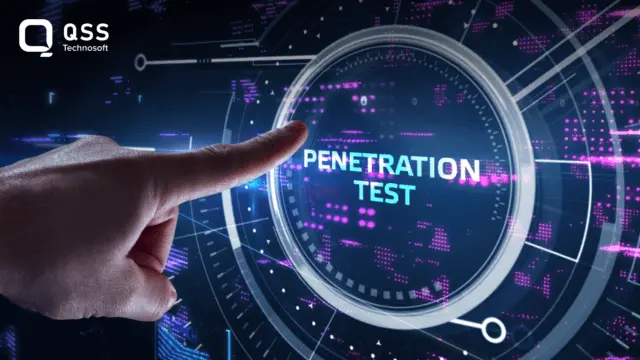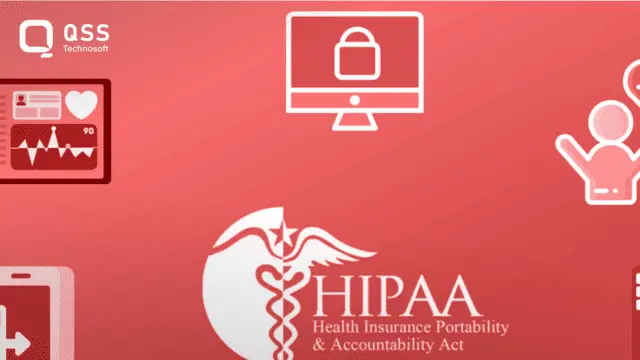Hey, are you as well concerned about the security of your organization’s digital assets? We understand that in the latest global statistics, breaches have become increasingly common with cyber attacks making headlines almost every day. According to a new record through Risk Based Security, 2024 saw a 141% growth in breached records as compared to 2019. So, now more than ever, it’s critical for businesses to take measures to protect themselves and their clients’ sensitive information, including through Vulnerability Assessment and Penetration Testing -VAPT Testing.
But how to overcome this? Well! One effective and the most superior way to assess your company’s security measures is through Vulnerability Assessment and Penetration Testing (VAPT). In reality, a current study observed that 70% of agencies have a scarcity of committed security employees, further reinforcing the importance of VAPT checking out.

For example, let’s say your enterprise has an e-trade website that techniques customers’ credit card information. A VAPT test can help identify any vulnerabilities in your website’s code, such as SQL injections or cross-site scripting, that could potentially be exploited by a malicious actor. This can help you take preventative measures to secure your website and protect your customer’s sensitive data.
In this blog, we will understand about the role of VAPT testing in compliance and regulatory standards.
Read Also: Cutting AWS Costs with IPv6: A Comprehensive Guide to Migrating from IPv4 to IPv6 for Elastic IPs
What is VAPT Testing?
Vulnerability Assessment and Penetration Testing (VAPT) is a comprehensive security testing methodology used to identify vulnerabilities in an organization’s systems and networks. VAPT testing involves two distinct steps: vulnerability assessment and penetration testing.
A vulnerability assessment is the process of identifying vulnerabilities in an organization’s systems and networks. It involves scanning devices and systems for known vulnerabilities, misconfigurations, and weak security controls. The goal of a vulnerability assessment is to create a comprehensive inventory of potential security weaknesses.
Once vulnerabilities are identified, penetration testing simulates real-world attacks to determine the impact those vulnerabilities could have on an organization. Penetration testers attempt to exploit identified vulnerabilities in a controlled environment to evaluate the effectiveness of existing security controls and identify potential weaknesses that could be exploited by malicious actors.
Read Also: Uncover the 15 Best Testing Practices for Salesforce App Development
Understanding Compliance and Regulatory Standards
Compliance and regulatory standards are sets of rules and guidelines that organizations must follow to ensure the security, integrity, and availability of their data. These standards are imposed by regulatory bodies, industry associations, or specific sectors to protect sensitive information from unauthorized access, disclosure, and tampering.
Examples of well-known compliance standards include the Payment Card Industry Data Security Standard (PCI DSS), the Health Insurance Portability and Accountability Act (HIPAA), the General Data Protection Regulation (GDPR), and the ISO/IEC 27001 standard for information security management systems.
Organizations that fail to comply with these standards can face severe consequences, such as financial penalties, loss of customer trust, reputation damage, and legal liabilities.
VAPT testing plays a critical role in meeting compliance requirements and maintaining regulatory standards.
The Importance Terms of VAPT Testing for Compliance
Lets understand more about the important terms of VAPT Testing for compliance.
PCI DSS
The Payment Card Industry Data Security Standard (PCI DSS) is a set of security standards developed to protect cardholder data. Organizations that handle payment card data must comply with PCI DSS requirements. VAPT testing is considered a fundamental requirement of PCI DSS compliance. By conducting regular VAPT testing, organizations can identify vulnerabilities that could lead to unauthorized access to cardholder data and potential data breaches.
HIPAA
The Health Insurance Portability and Accountability Act (HIPAA) applies to organizations handling patients’ protected health information (PHI). HIPAA requires organizations to implement appropriate safeguards to protect PHI against unauthorized access or disclosure. VAPT testing is an essential component of HIPAA compliance, allowing organizations to identify vulnerabilities that could result in PHI exposure or access by unauthorized individuals.

GDPR
The General Data Protection Regulation (GDPR) is a regulation that aims to protect the privacy and personal data of individuals within the European Union (EU). GDPR mandates that organizations implement appropriate technical and organizational measures to ensure the security of personal data. VAPT testing helps organizations identify vulnerabilities that could jeopardize the security and privacy of personal data, helping them comply with GDPR requirements.
ISO 27001
ISO 27001 is an international standard that provides a systematic approach to managing sensitive corporate information. Compliance with ISO 27001 demonstrates an organization’s commitment to information security management. VAPT testing is an integral part of ISO 27001 compliance, as it helps identify vulnerabilities and assess the effectiveness of information security controls.
Read Also: How to Build an App like Trezor Cryptocurrency Wallet?
Benefits of VAPT Testing
VAPT testing offers a multitude of benefits to organizations, ensuring the security and resilience of their digital infrastructure. Let’s delve into the key advantages of VAPT testing, supplemented with technical examples.
Identification of Vulnerabilities and Weaknesses:
VAPT testing is specifically designed to identify vulnerabilities in networks and systems. It reveals potential weak points in an organization’s security measures, such as outdated software, misconfigured firewall rules, or incorrect user permissions.
For instance, an organization might discover an unpatched vulnerability in their web application during VAPT testing, which allows an attacker to execute arbitrary code or access sensitive data.
Evaluation of Security Controls and Measures:
VAPT testing provides a comprehensive evaluation of the effectiveness of existing security controls and measures. Technical experts simulate various attack scenarios and attempt to bypass security measures to ascertain their robustness. This evaluation helps organizations understand the strengths and weaknesses of their security architecture.
For example, a penetration test might reveal that a WAF (Web Application Firewall) in place does not effectively mitigate certain types of web application attacks, allowing unauthorized access to be gained.
Prediction and Prevention of Potential Attacks:
VAPT testing involves simulating real-world attack scenarios, enabling organizations to predict potential attacks and assess their potential impact on the system. By gaining insight into the techniques used by attackers, organizations can take proactive steps to improve their security measures.
For example, a VAPT test might uncover a vulnerability in an email system that allows phishing attacks to be successful, prompting the organization to implement additional email security controls such as anti-phishing training and advanced threat detection systems.
Protection of Brands and Reputations:
A successful hacking attempt or data breach can inflict severe damage to a company’s brand image and reputation. VAPT testing helps organizations avoid such predicaments by identifying vulnerabilities before malicious actors exploit them. By protecting customer data and ensuring a robust cybersecurity posture, organizations can maintain their brand reputation and trust.
An example of reputation damage would be if a retail organization suffers a data breach, resulting in customer financial information being stolen and subsequently shared on underground forums.
Compliance with Regulatory Requirements:
Various industry regulations and standards mandate regular security audits and testing. Organizations can use VAPT testing to ensure compliance with these requirements and demonstrate adherence to security best practices. Non-compliance can result in significant fines, legal liabilities, and reputational damage.
For instance, the Payment Card Industry Data Security Standard (PCI DSS) requires regular vulnerability assessments and penetration tests for organizations handling credit card data.
Reduction of Costs:
Identifying and addressing vulnerabilities through VAPT testing can significantly minimize the costs associated with a successful cyber attack. The aftermath of a security breach can be financially devastating, including expenses related to data recovery, system repairs, legal fees, and potential lawsuits. By conducting regular VAPT testing, organizations can proactively prevent such incidents, thus reducing their financial burden.
An example of cost reduction would be if a financial institution identifies and patches a vulnerability before it is exploited, thus avoiding the financial losses that would have resulted from a successful attack.
Maintenance of Customer Trust:
Nowadays, customers expect their data to be secure when interacting with businesses online. Regular VAPT testing helps organizations demonstrate their commitment to protecting customer information.
By ensuring the security and privacy of customer data, organizations can establish trust and confidence, leading to stronger customer relationships and loyalty.
Read Also: How to Build an App like Exodus Cryptocurrency Wallet?
The Role of VAPT Testing in Compliance and Regulatory Standards
VAPT testing plays a critical role in helping organizations meet and maintain compliance with regulatory and industry standards. It provides an in-depth assessment of an organization’s security posture by identifying vulnerabilities that could potentially compromise sensitive information.
Identifying Vulnerabilities
VAPT testing helps organizations identify both known and unknown vulnerabilities in their systems, infrastructure, and applications. Known vulnerabilities are those that have been previously identified and documented by security researchers, while unknown vulnerabilities may not have been publicly disclosed yet.
By leveraging a combination of automated scanning tools, manual testing techniques, and threat modeling, VAPT testing helps organizations uncover vulnerabilities that can be exploited by attackers. This allows organizations to remediate these vulnerabilities before they can be exploited, reducing the risk of data breaches or other security incidents.
Assessing Security Controls
Compliance and regulatory standards often mandate the implementation of specific security controls to protect sensitive data. VAPT testing helps organizations assess the effectiveness of these controls by attempting to bypass or exploit them.
By simulating real-world attack scenarios, VAPT testing allows organizations to evaluate the resilience of their security controls and identify potential weaknesses. This information can then be used to fine-tune security configurations, update policies, and improve overall security posture.
Providing Actionable Recommendations
One of the most valuable outcomes of VAPT testing in the context of compliance is the provision of actionable recommendations. Once vulnerabilities and weaknesses have been identified, VAPT testers provide organizations with detailed reports that outline the specific steps required to remediate the issues.
These recommendations can range from simple configuration changes to more complex software patches or architectural improvements. By following these recommendations, organizations can better align their security practices with compliance and regulatory standards, reducing the risk of non-compliance.
Continuous Improvement
Compliance and regulatory standards are constantly evolving to address emerging threats and vulnerabilities. VAPT testing should not be seen as a one-time activity but as an ongoing process to ensure ongoing compliance.
Regular VAPT testing allows organizations to monitor their security posture continuously, identify new vulnerabilities, and adapt their security controls accordingly. By staying up-to-date with the latest security best practices, organizations can ensure that they remain compliant with ever-changing regulatory standards.
Read Also: Top 10 Custom App Ideas for Salesforce
Conclusion
VAPT testing is not just another box to tick off on your compliance checklist. It’s the secret weapon that can make or break your organization’s security. With hackers lurking around every virtual corner, you need expert eyes to identify vulnerabilities that could be leaving your sensitive data exposed. And that’s where QSS Technosoft comes in.
By partnering with QSS Technosoft for your VAPT testing needs, you’ll not only be ensuring compliance with regulatory standards, but you’ll also be arming yourself with actionable recommendations to tighten your security controls. No more relying on outdated, ineffective security measures – QSS Technosoft will show you the way to continuous improvement.
And let’s not forget about the financial and reputational damage that a security breach can cause. With QSS Technosoft’s VAPT testing, you’ll be mitigating that risk and protecting your bottom line. No more headaches of dealing with the aftermath of a breach – We at QSS Technosoft will give you the upper hand.
So, if you want to maintain the trust of your customers and stakeholders, if you want to sleep peacefully knowing your data is secure, and if you want to stay one step ahead of the hackers, it’s time to take action. Reach out to QSS Technosoft now and let them show you what true security looks like. Your organization’s safety is worth every penny.
We are proud to mention that our work has been recognized by leading B2B reviews and research platforms like GoodFirms, Clutch, MirrorView, and many more.


Understanding the Role of VAPT Testing in Compliance and Regulatory Standards